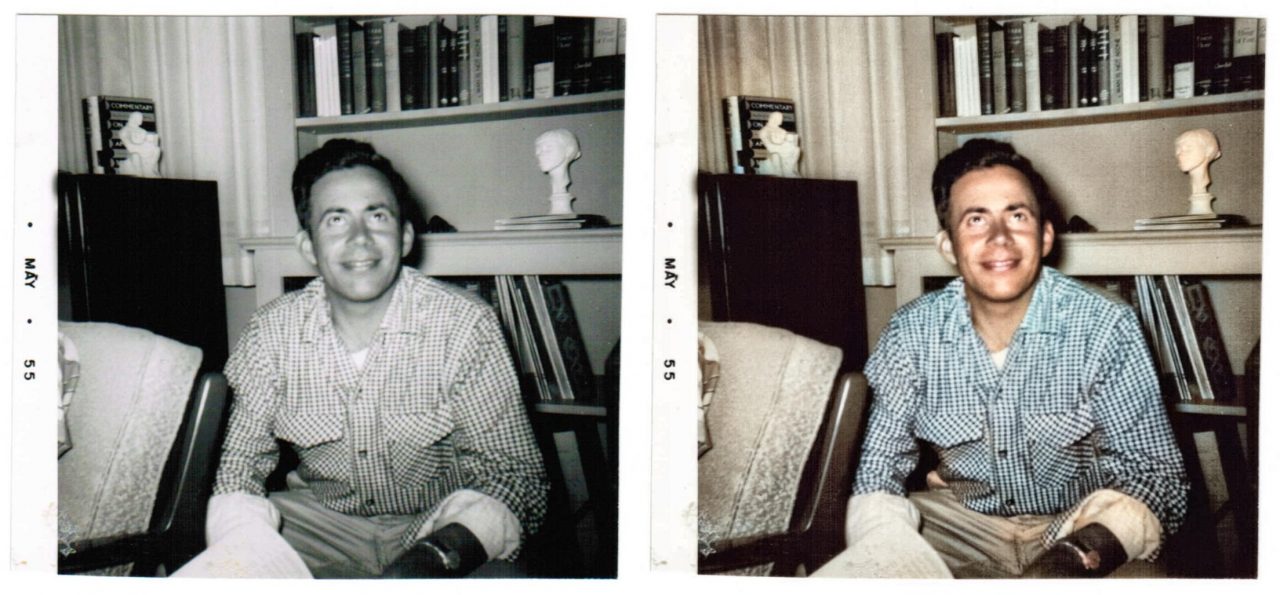Old black and white photos- do they look old just because the lack the colors most of us see day to day? We look back at them from a world full of colors, but so did the original photographer. Can we open that world again?
Among many tweets that slip by on a daily basis, sometimes I get a spidey sense of more to explore (although I have X other things I ought to be doing). This happened when I came across a ResearchBuzz tweet (if you don’t follow Tara do so now):
That’s neat, yes? The typical thing one might do is exclaim “COOL!” and retweet ASAP then move on. But I like to try things first, so I hopped over to https://colourise.sg/ to see what it did.
The backstory and insights into what these data scientists in Singapore did is worth the read. The hook in the opening grabs me:
Have you ever looked at an old black and white photo and wondered: what did the person taking this photo actually see?
Was there something about the arrangement of colours that compelled the photographer to capture this very moment? And if so, did the photographer see something that we?—?modern day viewers of this black and white photo?—?are not privy to?
And also note they had a particular interest in being able to provide colors to historic images from Singapore. Then a whole long raft of tech stuff, but the important note here (and on the tool site) is “The purpose of colourisation is to generate an image with colours that are plausible. It by no means guarantees that the colourised image is an accurate representation of the actual snapshot in time.”
Okay, I will be honest. I tried it first before reading all that.
I went first into my old photos, and on a set of photos my sister had digitized from my Mom’s photos, there were two of my grandparents I have used, but forgot the one at the bottom that was of my Dad. The date on the side reads “May 1955”. So that was my first try in the Colourizer (I saved the side by sides):

It definitely has his skin tone and my first thought is that it adds more punch to the photo. I do find myself wondering if he would wear a blue shirt, red was more his color. I’m curious some why it chose blue, but he, AI did not know Dad. And then I have to do the math and realize he is only 29 there.
So next I think about doing a historic photo, that would be valuable to see how a 100+ year old photo maybe changes it’s impression with added colors. I open my new browser tab, and since I use the Library of Congress Free to Use Browser Extension, I get a random image there. The first few I thumb through are war photos, than the random castles one gets, and old baseball players. But the 5th one I found was rather appropriate, especially that it was International Women’s Day.
I learn I was responsible for sending Clint Lalonde down a rabbit hole:
Later my mind gets wondering. The site does claim the photos are only plausible, not necessarily accurate. I wonder about the kind of round trip test one can do with Google Translate (translate something in one language to another than route it back to see how far off it might be).
As it happens, I have a recent photo of a rather special person wearing a bright colored shirt sitting in front of a colorful background.

2019/365/61 We Fit flickr photo by cogdogblog shared into the public domain using Creative Commons Public Domain Dedication (CC0)
So I convert the photo to black and white in photoshop, then run that image through https://colourise.sg

Obviously the shirt and background colors are not original, but the skin and hair are rather close (the smile of course, is amazing). It is almost a bit sepia toned, one might think it’s a different era.
And I keep in mind that notes mentioned in the article describing the methodology:
Our model performs well on high resolution images that prominently feature human subjects (images where people occupy a large portion of the image) and natural scenery.
The following images look believable (at least to us) because they contain objects that exist in sufficient examples of the training image dataset. And so the model is able to identify the correct objects in the image and colour them believably.
Bringing black and white photos to life using Colourise.sg?—?a deep learning colouriser trained with old Singaporean photos
Also from this article are some other brilliant examples, works great with sports heroes:
This was a lot of fun to play with and think about- and suggests that AI can do some amazing things, even if the color is off.


Thanks for this fun rabbity sidetrip. And yes, her smile is remarkable!